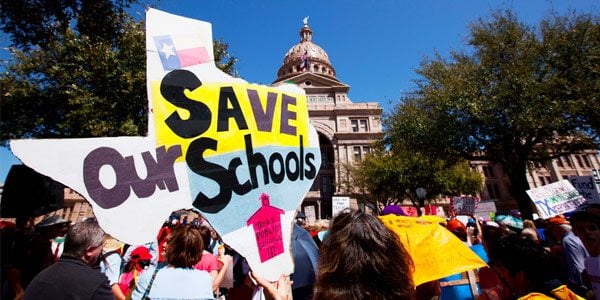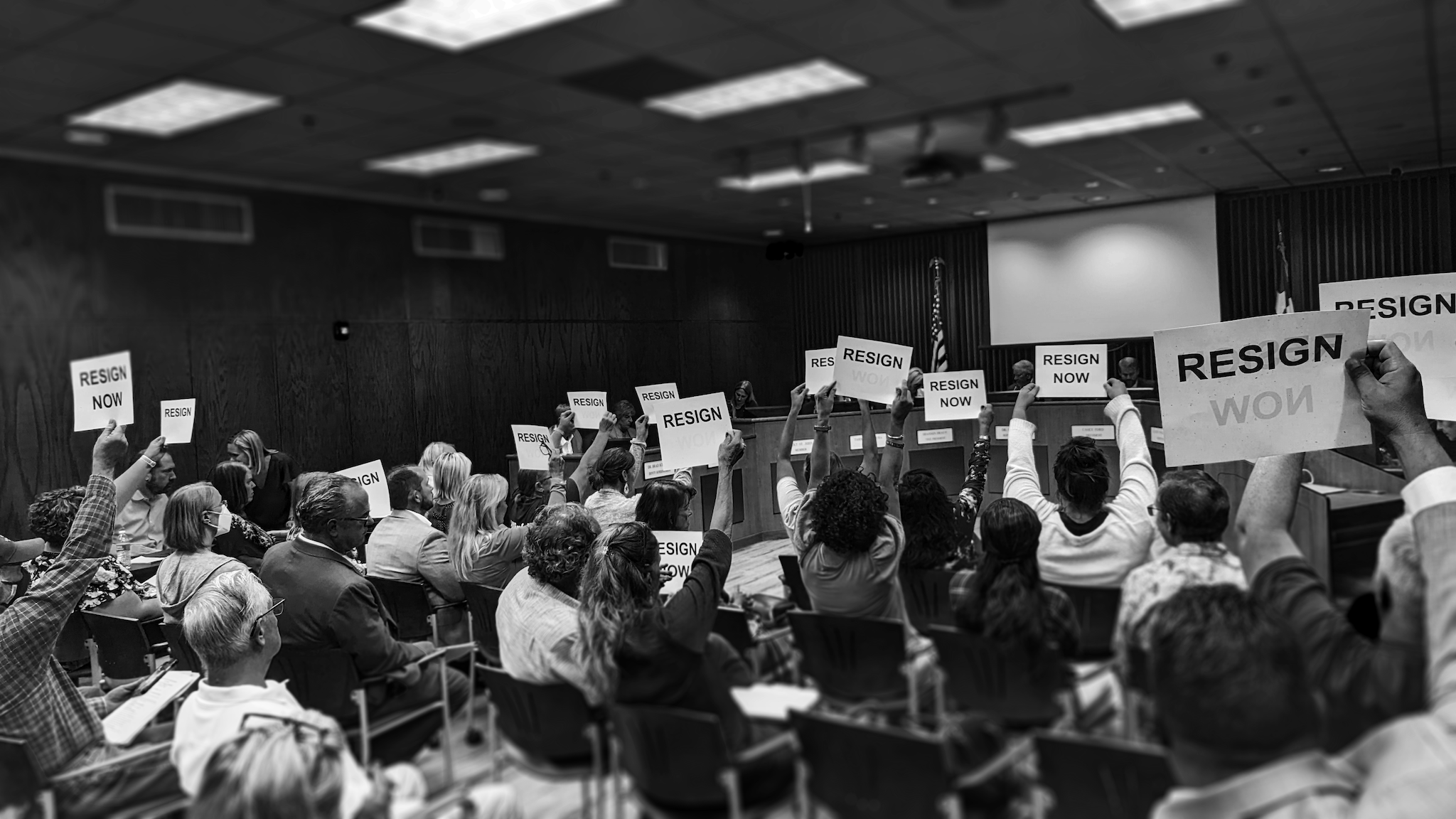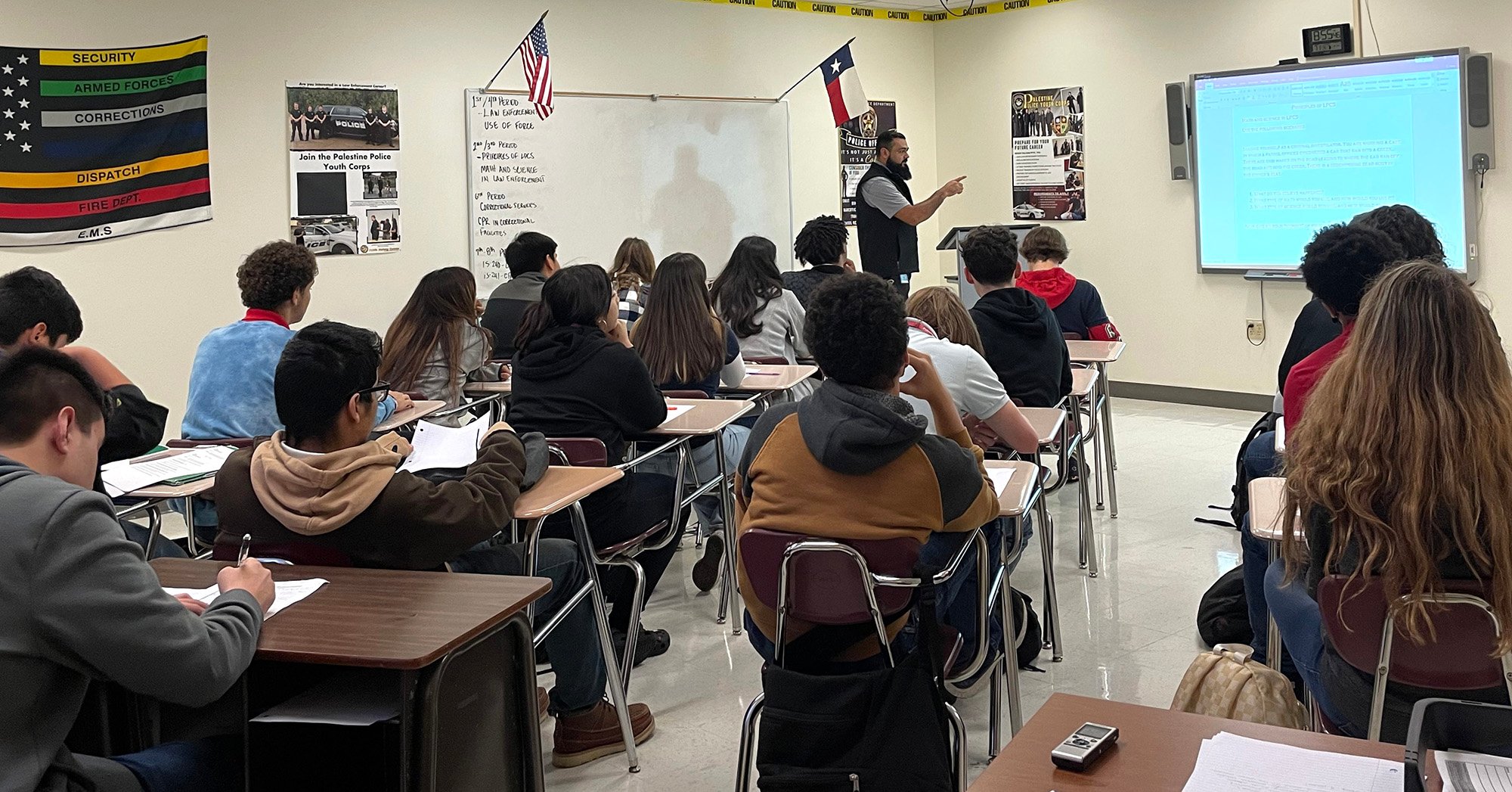
Right-Wing Think Tank: Let the Market Sort Out School Finance

There’s a basic quandary at the heart of the school finance case currently before the Texas Supreme Court: What does it cost, or what should it cost, to educate a student in Texas?
Blue-ribbon panels of experts, analysts, school officials and lawmakers have all been tasked with answering the question in the past, and all have either given up or been called off before arriving at an answer. During the lower court trial for the current school finance suit, school district lawyers suggested that there is little political interest in the results of such a frank accounting — like a trip to the dentist you put off because you know that throbbing sensation in your gums can’t be good.
Former District Judge John Dietz estimated in 2014 that Texas ought to pay at least $6,404 per student, at minimum, which was around $800 more than the state allocated at the time. That’s at minimum. And it would still leave Texas around $2,000 below the national average.
According to one argument before the court, that’s just fine, because the only way to fix school finance isn’t to spend more, but to spend smarter. The architect of this theory is former House Education Chairman Kent Grusendorf, who organized a group called Texans for Real Efficiency and Equity in Education, which joined the districts’ lawsuit shortly after it was filed. The group argued that schools won’t ever get creative with their budgets without facing scarcity and competition for students. Let the market sort ‘em out.
Dietz, a Travis County Democrat, didn’t buy that plan. He ruled against Grusendorf’s group at trial and in favor of schools’ claims that the current funding is inadequate and unfair. The Texas Supreme Court gets the final say on the case, though, and its members — nine Republicans, some of them really Republican — have yet to weigh in. They’ll probably rule sometime in the next few weeks, and if they decide that Texas’ school finance system needs fixing, the Legislature could be forced to act fast.
Things might get a little messy for the last kids left at failing neighborhood schools, but they’d realize their mistake soon enough.
Never mind the uncertainty about what it costs to give Texas children a halfway decent education; such questions are “fruitless,” the report states. The authors invoke Austrian economist Friedrich Hayek to argue that sticky questions like this are unanswerable except through unbridled free market competition. Public education, they write, is like a used car. Its value is determined not by the cost of its parts but by what someone else will pay for it.
“The true cost of educating a child simply isn’t known in the current education system,” said TPPF economist Vance Ginn on a press call Monday morning. “There’s a solution — it’s called competition — [through which] the market price to educate children can start to be made apparent.”
The only way to know what education should cost, in other words, is to privatize it and see what people are willing to pay. Kids could pick the schools that rise to the challenge, and the schools with no students would close — things might get a little messy for the last kids left at those failing neighborhood schools, but they’d realize their mistake soon enough.
The problem with relying entirely on parents to decide which school to send their kids to — it’s popular to call this “parent empowerment” — is that parents can be terrible judges of what makes a good school. Parents are often fiercely loyal to charter schools with terrible ratings, even as the state works to shut them down. A Florida voucher program for special ed students spawned a whole industry of inexpensive and poorly managed schools that had no problem enrolling students.
There are people out there who’d enroll their kids in a Mark McGrath celebrity cruise if you let them. We have standards for classroom learning because market forces don’t always address things like shared social values, evidence-based science and history lessons, or even career readiness skills.
Work like this from TPPF serves an important role in the Legislature: It affirms, with charts and footnotes, the ideals many GOP members feel in their guts but may struggle to articulate. As Grusendorf noted, school finance is incredibly complex and has only gotten more so lately. This report makes things very simple.
Last session, retiring House Public Education Chairman Jimmie Don Aycock led an effort to unite lawmakers behind a complicated school finance overhaul that might address some long-term problems without costing any school district too much. With just a few weeks before the session ended and no real pressure to act, the Legislature punted on it, avoiding the delicate negotiations that come with any school finance fix.
Now, Grusendorf and TPPF have handed lawmakers a solution that lets them take a pass on deciding how much public education should cost, what with such answers being, in their opinion, unknowable anyway. To this group, school vouchers are not just an experiment in school reform but the solution to our longstanding inability to properly fund our schools. Under Grusendorf’s plan, lawmakers could finally sleep easy knowing that they’d done their part and left the good people of Texas at the mercy of the free market, unknowable and almighty.


